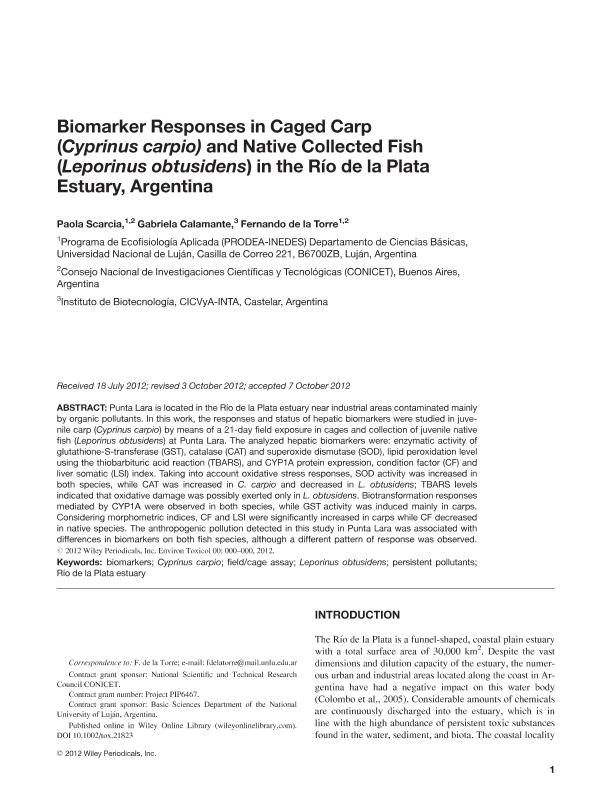Artículo
Biomarker responses in caged carp (Cyprinuscarpio) and native collected fish (Leporinus obtusidens) in the Río de la Plata Estuary, Argentina
Fecha de publicación:
11/2012
Editorial:
John Wiley & Sons
Revista:
Environmental Toxicology
ISSN:
1520-4081
Idioma:
Inglés
Tipo de recurso:
Artículo publicado
Clasificación temática:
Resumen
Punta Lara is located in the Río de la Plata estuary near industrial areas contaminated mainly by organic pollutants. In this work, the responses and status of hepatic biomarkers were studied in juvenile carp (Cyprinus carpio) by means of a 21-day field exposure in cages and collection of juvenile native fish (Leporinus obtusidens) at Punta Lara. The analyzed hepatic biomarkers were: enzymatic activity of glutathione-S-transferase (GST), catalase (CAT) and superoxide dismutase (SOD), lipid peroxidation level using the thiobarbituric acid reaction (TBARS), and CYP1A protein expression, condition factor (CF) and liver somatic (LSI) index. Taking into account oxidative stress responses, SOD activity was increased in both species, while CAT was increased in C. carpio and decreased in L. obtusidens; TBARS levels indicated that oxidative damage was possibly exerted only in L. obtusidens. Biotransformation responses mediated by CYP1A were observed in both species, while GST activity was induced mainly in carps. Considering morphometric indices, CF and LSI were significantly increased in carps while CF decreased in native species. The anthropogenic pollution detected in this study in Punta Lara was associated with differences in biomarkers on both fish species, although a different pattern of response was observed.
Archivos asociados
Licencia
Identificadores
Colecciones
Articulos(SEDE CENTRAL)
Articulos de SEDE CENTRAL
Articulos de SEDE CENTRAL
Citación
Scarcia, Paola Inés; Calamante, Gabriela; de la Torre, Fernando Roman; Biomarker responses in caged carp (Cyprinuscarpio) and native collected fish (Leporinus obtusidens) in the Río de la Plata Estuary, Argentina; John Wiley & Sons; Environmental Toxicology; 29; 8; 11-2012; 950-960
Compartir
Altmétricas




